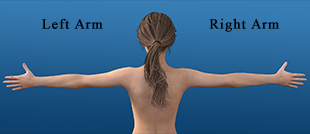Best Forearm Exercises
If you want to improve your golf swing, boost your basketball game, or excel at racquetball, doing forearm exercises can help strengthen the muscles in your hands, wrists, and elbows. Even if you don’t participate in these sports, these exercises can improve your grip and forearm strength, making it easier to open the most stubborn jars of pickles. Do these simple exercises to strengthen your forearms and avoid injuries.
Contents
Best Forearm Exercises With Detailed Instructions

a hand holding a stick by Alexey Demidov is licensed with Unsplash License
Unless you’re recovering from a forearm injury, you can perform these exercises until you reach muscle failure. This means repeating the motion until you no longer have the strength to maintain proper form. Before you begin, stretch your wrists forward and backward to warm them up, and then rotate them in large circles to loosen them.
Performing a series of four to five forearm exercises once or twice a week is recommended. However, it’s advisable to do these on leg days to avoid overworking your arms.
Using Dumbbells
Dumbbell curls are excellent for building forearm strength and can be done with the palms facing up or down. To perform palm-up curls:
- Place your forearms on your thighs with your wrists resting on your knees and your palms facing up.
- Hold a 5- to 10-pound dumbbell in each hand.
- Grip the dumbbells securely, and raise your hands as high as you can without lifting your wrists or arms off your legs.
- Continue to hold the dumbbells up for a moment, then lower them to the starting position with your hands hanging in front of your knees.
The palms-down wrist curls are similar, but with your hands facing down. To do this exercise:
- Rest your forearms on your thighs with your wrists over your knees and your palms facing down.
- Hold a 5- to 10-pound dumbbell in each hand.
- Raise your hands as high as you can without lifting your wrists or arms from your legs.
- Continue to hold the dumbbells in the raised position for a moment, then lower to the starting position with your hands hanging in front of your knees.
Wrist supination and pronation exercises can also improve your forearm strength and flexibility. To do this exercise:
- Hold your arms at your side with the elbows bent at a 90-degree angle and a 1- to 3-pound weight in each hand.
- Hold the weight with your palm rotated downward (supination) and maintain the position for five seconds.
- Rotate your forearm so your palm faces upward (pronation) and hold the weight in this position for five seconds.
- Repeat.
Utilizing Machines
You can use a pulley machine to strengthen your forearms if you’re looking to round out your gym routine. A straightforward, easy-to-master option is the tow cable row. To perform this exercise:
- Attach a tow cable to a pulley just above chest height.
- Thread a hand towel through the pulley handle and grip one end of the towel in each hand.
- Pull the towel toward your chest in a rowing motion, drawing your elbows outward while squeezing your shoulder blades together.
You can perform a similar motion at a downward angle with a weight bar. The pulley should be above shoulder height. To perform this exercise:
- Hold the weight bar with your palms facing down.
- Extend your arms downward until they’re straight alongside your body, keeping the weight bar positioned in front of you.
- Hold for a moment, then return to the starting position in a controlled motion.
You can also try behind-the-back cable curls, using one arm at a time:
- Grasp the handle of a low pulley with one hand, and walk two or three steps away from the machine.
- Position your back to the machine and your opposite foot forward; if you’re pulling with your left hand, place your right foot forward and vice versa.
- Curl your arm, bringing your hand toward your shoulder.
- Hold the raised position for a moment before lowering your arm back to the starting position in a controlled motion.
Without Equipment
You can improve your forearms at home with simple exercises that don’t require special equipment. Crab walking is an effective way to build strength in your forearms. If you’re not familiar with the crab walk, follow these steps:
- Position yourself in the reverse tabletop pose with your chest facing upward, supported by your hands and feet.
- Place your hands directly under your shoulders, pointing your fingers toward your feet.
- Position your ankles directly under your knees, with the soles of your feet on the floor.
- Use your hands and feet to walk forward as far as you can, aiming for at least one minute of uninterrupted crab walking per set.
The shoulder tap plank is another excellent exercise that will also strengthen your core. To perform this exercise:
- Assume the plank position with your palms and toes on the floor, maintaining your body in a flat horizontal line and positioning your hands directly under your shoulders with your arms straight.
- Lift your right hand from the floor and tap your opposite shoulder.
- Return your right hand to the floor and repeat on the opposite side, using your left hand to tap your right shoulder.
Benefits of Forearm Exercises
Forearm exercises are a valuable addition to your workout routine. Performing these regularly will:
- Help prevent wrist and forearm injuries
- Balance your upper body strength
- Increase your weight-lifting abilities
- Help you avoid training plateaus
Have Questions? Contact Dr. Knight at The Hand and Wrist Institute
If you’re experiencing forearm weakness or you’re recovering from an injury and want to perform these exercises safely, contact Dr. Knight at The Hand and Wrist Institute. He can diagnose any forearm issues and help you safely increase your strength. Contact us today.

























